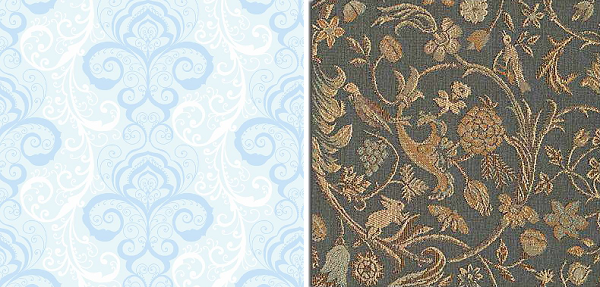Brocade fabrics are quite popular and are used for a variety of items. But what are they best used for? Home décor items or apparel?
Brocade is as luxurious to the eye as it is smooth to the touch and millennials grew up to recognise this fabric as the upholstery cover used for couches and parlour chairs. It is a richly decorative shuttle-woven fabric produced in plain or multi-coloured silks with gold and silver threads, has a wonderfully soft texture, and was traditionally regarded as an exclusive fabric reserved for the elite, aristocrats, and the wealthy.
The Imperial brocade was the favourite and the most expensive type and was woven from silk threads with gold or silver yarn.
Today, Brocade is still popular and is a luxury fabric cherished by interior designers, home decorators, and fashion designers. In the past few years, it has become one of the trending luxury materials that are ideal for both clothing and home furnishings.

What Are Brocade Fabrics Best Used For?
Traditionally, it was used to make clothing for special events and ceremonies. Brocade was made into coronation attires and wedding gowns. Brocade was also used to make men’s vests and waistcoats, shoes, and ladies’ handbags.
It was used extensively in middle to upper-class homes for furniture upholstery, bed covers, tablecloths, napkins, bell pulls, elaborate drapery, canopy beds, and lampshades.
Today, it is pretty much used for similar things including semi-formal and formal wear, blazers, agbadas (African kaftans), cummerbunds, and bridal wear. Brocade is also used for restorations of antique furniture, like chaise lounges, accent chairs, period sofas and couches, upholstery works, and for window treatments.
So, what is brocade material best used for?
While brocade fabrics are best used for home décor items and interior furnishings, we also believe that they still make great special occasion apparel.
Depending on your main industry, if you are an interior designer or a home decorator, there are a variety of items you can make from Brocade. Asides from its use for furniture upholstery and drapery, it can be used as fabric wallpaper, table linen, wall art, throws, panelling material, and foldable screens. It is a desirable textile for window treatments and feature-wall coverings if you want to add a formal and classic look to your hallway, living, or bedroom space.
If you are a fashion designer, a DIY sewing enthusiast, a tailor, or a seamstress, you already know that luxurious brocade fabrics are popular materials for vintage-inspired wedding dresses, tuxedos, formal jackets, evening dresses, cropped jackets, and vintage-inspired hand purses and bags. For an elegant and sophisticated look, it is an ideal option and in the entertainment industry, it is used for stage show costuming and apparel.
Recently, high-end designers have incorporated brocade textiles into designs made for everyday wear. It is now used extensively in Africa as the base fabric for the tie-and-dye process.
Attractive Features of Brocade Materials
Brocade materials bear a similarity with damask when you view it for the first time. But it just stops there. Once you touch and feel the material you will find that it doesn’t have the same texture, thickness and weight that damask possesses. Rather, you will find that it is smooth to the touch and has distinct ornamental features that are slightly stiffer where they appear, and a flat surface that shows a low-relief effect.
Brocade fabric mostly comes with a plain background of one solid colour woven with warp yarn and constructed using a taffeta, satin, damask or twill weave. Its pattern has mostly floral themes with slight relief constructed with the filler yarns during the weaving process.
Today it is not uncommon to find embellished brocades ornamented with sequins, faux stones, Swarovski stones, and intricate beading.